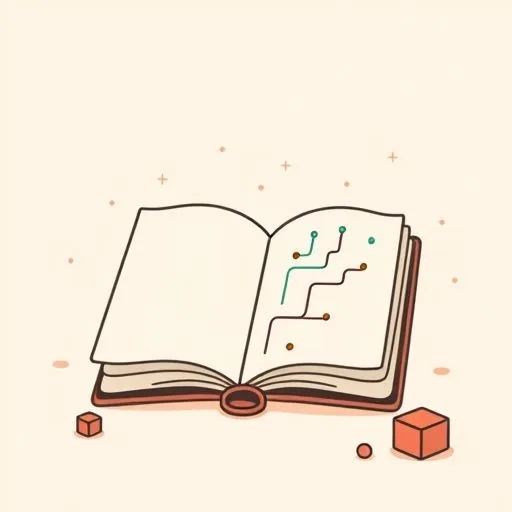
Picture this: you’re watching your seven-year-old daughter excitedly explain how her toy robot ‘thinks’ and reacts to her commands, her eyes sparkling with curiosity that could ignite a thousand stars. This isn’t science fiction—it’s the reality of raising kids in today’s AI-driven world. As we prepare our children for an AI-saturated future, aren’t we realizing that AI literacy has become as essential as reading or writing? Let’s explore why this digital fluency matters—because it’s not just about technology, but about empowering our kids to think critically, create fearlessly, and thrive in a world transformed by artificial intelligence!
How is AI Already Shaping Your Child’s World?
Let’s be honest—when we think about AI, most of us picture sleek robots or talking computers straight out of sci-fi movies. But the truth? AI has already woven itself into the fabric of our daily lives. From streaming services that recommend our favorite shows to navigation apps that help us avoid traffic, artificial intelligence isn’t just changing our world—it’s changing how our children experience it!
Here’s what really sets AI apart: its knack for learning and adapting on its own. This isn’t just about automation—it’s about amplification! AI tools are helping doctors detect diseases earlier, scientists discover new planets, and artists create breathtaking visuals. For our kids, this means opportunities we could scarcely dream of when we were their age!

I remember when my daughter first asked about how her cartoon characters looked ‘so real’ on-screen. As I explained computers and animation, her questions naturally evolved into Can computers think like me? That moment sparked something beautiful—a genuine curiosity about the technology she interacts with daily.
Our kids aren’t just passive consumers of AI; they’re becoming collaborators in a digital dance between human imagination and artificial intelligence. This early engagement is actually the first step in developing foundational AI literacy skills that will serve them throughout their lives.
Why Does Every Child Need AI Literacy Skills?

Here’s something that might surprise you: knowing AI isn’t about becoming a coding genius. AI literacy is about understanding how these systems work, how to use them responsibly, and how to ask the right questions. Think of it like learning to read—not so you can become an author, but so you can navigate the world of information with confidence.
Universities like Ohio State have already stepped up, requiring their students to become ‘fluent in AI and how it can be responsibly applied to advance their field.’ This isn’t just about job skills (though that’s important!), it’s about developing critical thinking, ethical awareness, and creative problem-solving—the tools our kids will need to shape a future that serves humanity.
AI isn’t just a subject to be taught—it’s a fundamental shift in how we understand education and prepare our children for a world where human and artificial intelligence work together in harmony.
Many parents worry about screen time and distraction, but what if we reframed this? What if we saw AI tools not just as entertainment, but as doorways to new worlds of learning? My daughter and I recently explored an AI-inspired storytelling app that creates personalized adventures based on her interests. The result? Not just giggles and engagement, but unexpected lessons in narrative structure, character development, and cause-and-effect relationships—all disguised as fun!
The research is clear: AI isn’t going away. A Hong Kong university study involving over 600 students and faculty identified ten key areas for developing effective AI education policies. The takeaway? Our children need to participate in this digital evolution, not just watch from the sidelines. This requirement reflects an important shift – universities recognize that AI literacy will be as fundamental to education as reading and writing have been.
How Can You Balance AI Learning with Play at Home?
As a parent, I get it—balancing enriching activities with the sheer joy of unstructured play can feel like walking a tightrope. But here’s the exciting part: AI learning doesn’t have to mean sacrificing either! In fact, when approached with curiosity and creativity, digital tools can enhance traditional activities in beautiful ways.

Consider these approaches:
- The Curious Conversator: Instead of fearing your child’s questions, embrace them! ‘Why do you think the tablet knows what you want to watch?’ can lead to wonderful discussions about pattern recognition, machine learning, and human preferences in a way that’s accessible even to young minds.
- The Creative Collaborator: Use AI-powered tools as assistants rather than replacements. Digital art programs, music composition apps, or even simple coding platforms can become collaborative spaces where your child guides the technology to express their unique voice.
- The Ethical Explorer: As our children engage with AI, we have the opportunity to weave in important conversations about privacy, bias, and the human responsibility behind technological advancements. UNC System’s approach is inspiring—they’ve moved beyond mere restrictions to thoughtful integration. Their guidelines for AI use in education emphasize responsibility and creativity, exactly the balance we’re seeking at home!
Remember our goal isn’t to raise little technologists but to curious, compassionate kids who can thrive alongside AI. This means nurturing their unique human strengths—empathy, imagination, moral reasoning—while giving them the digital literacy to navigate tomorrow’s challenges. These methods help foster natural AI literacy through curiosity and creativity rather than structured lessons.
How Can Parents Innovate in the Age of AI?

Now, let’s get real for a sec—parenting in the age of AI comes with real concerns. Screen time battles, online safety worries, and the fear that our kids might miss out on essential social skills are valid and significant. But here’s my explosive realization: we don’t have to choose between technology and tradition.
The most successful approach I’ve found is blending old-fashioned values with new-fashioned tools. Family board game night? Make it digital with AR elements that bring the game to life. Outdoor exploration? Equip them with apps that identify local flora and fauna while teaching about conservation. The key is intention—we control the tools, they don’t control us.
A study of universities worldwide revealed an encouraging trend: 63% now encourage GenAI use, with many offering detailed guidance for classroom integration. This shift from restriction to embracing technology is happening at all levels, and our homes can be laboratories where this transition happens naturally.
As Korean-Canadian parents, we navigate this territory with one foot in tradition and one in innovation—balancing the wisdom of our heritage with the possibilities of tomorrow. When my daughter creates a digital story inspired by Korean folktales, animated by cutting-edge tools, inspired by the spicy-sweet memories of tteokbokki nights at grandma’s, she’s not just learning technology—she’s becoming a bridge between generations.
Ready to Start Your AI Parenting Journey? Try These 3 Steps!

Ready to embark on this journey with me? Here’s where we begin:
- Curiosity First: Spend this week simply observing and asking questions when your child interacts with technology. What interests them? What frustrates them? What makes them light up? You’ll discover hours of meaningful connection opportunities disguised as ordinary screen time.
- Explore Together: Identify one age-appropriate AI tool to explore as a family. This could be anything from voice assistants that answer ‘why’ questions to creative apps that transform your child’s drawings into animated stories. The objective isn’t mastery—it’s shared discovery!
- Connect with Community: Seek out parents who are navigating similar territory. Share insights, resources, and encouragement. Remember, we’re not just raising isolated individuals—we’re nurturing a generation of digital citizens who can think critically, collaborate compassionately, and create confidently.
The AI evolution isn’t coming—it’s already happening. Our kids will inherit a world where artificial intelligence enhances human potential, solves complex problems, and creates opportunities we can barely imagine. As parents, we have the profound privilege and responsibility to prepare them not just to adapt to this future, but to shape it.
So grab your digital passport, pack your sense of wonder, and join me in the adventure ahead! Our kids don’t just deserve to survive the AI revolution—they deserve to thrive in it, with hearts full of compassion, minds full of curiosity, and hands ready to build a future that honors the best of technology and the best of humanity.
Source: With tech shifting quickly, should the UNC System require a course on AI?, NCS Pin, 2025/09/11
